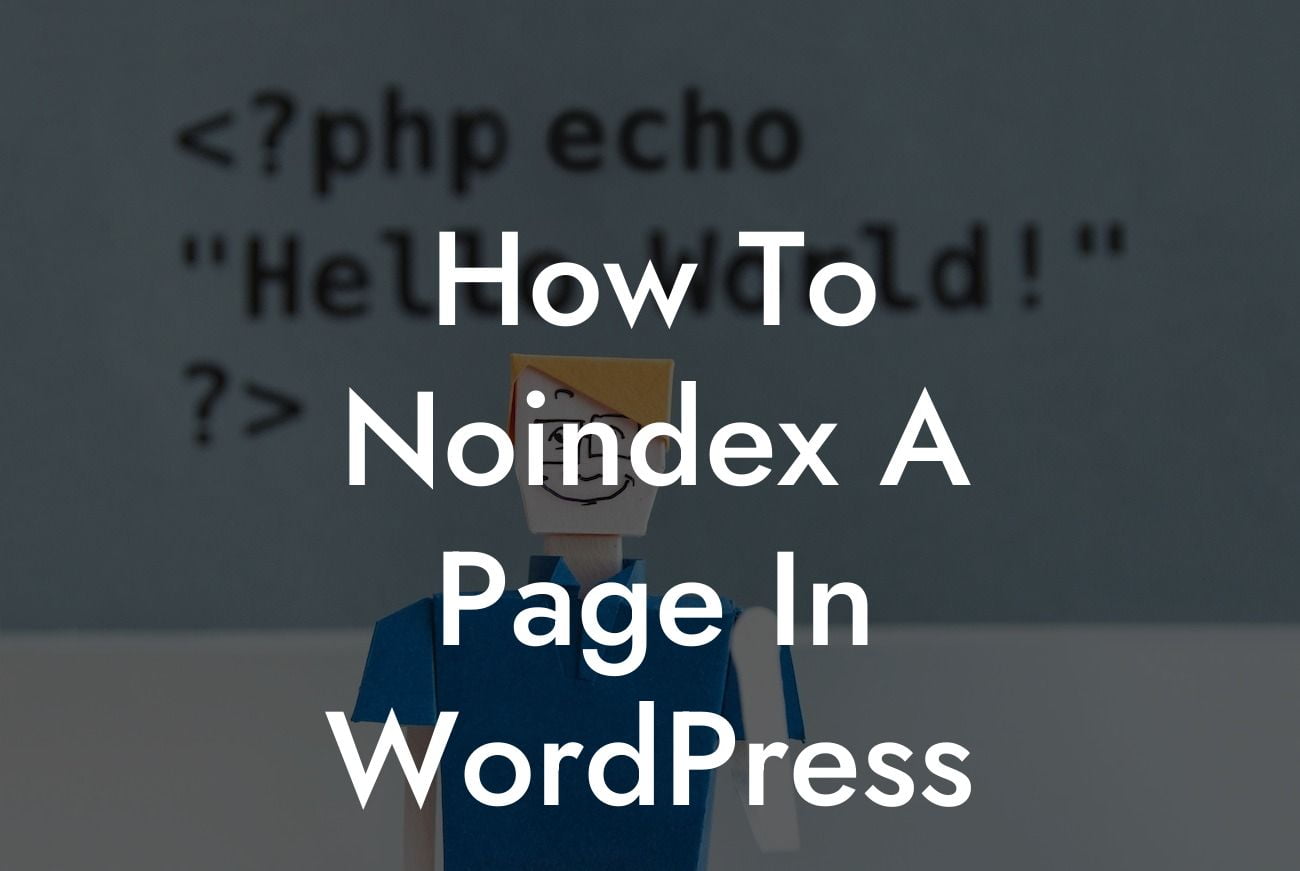Are you looking for a way to hide certain pages from search engine results in WordPress? Do you want to have more control over the webpages that appear in search engine listings? If so, you're in the right place! In this article, we will show you how to noindex a page in WordPress, giving you the power to optimize your online presence and drive relevant traffic to your site.
To start, it is important to understand what it means to noindex a page. When you publish a page on your WordPress site, search engines automatically index it, allowing it to appear in search results. However, there may be situations where you want to keep certain pages hidden from search engines, such as landing pages, thank you pages, or duplicates of existing content.
To noindex a page in WordPress, follow these simple steps:
1. Install and activate an SEO plugin: Before you can begin the process, it's necessary to have an SEO plugin installed on your WordPress site. Popular options include Yoast SEO, All in One SEO Pack, or Rank Math. Once installed, the plugin will provide you with additional settings and options.
2. Edit the page you want to noindex: Go to the WordPress dashboard and navigate to the "Pages" section. Select the specific page you want to noindex and click on "Edit."
Looking For a Custom QuickBook Integration?
3. Access the SEO settings: Scroll down the page editor until you find the SEO settings provided by the installed SEO plugin. Look for an option that allows you to set the page as noindex. In Yoast SEO, for example, you can find this option under the "Advanced" tab.
4. Enable noindex: Tick the box or toggle the switch that corresponds to noindex. This will instruct search engines not to include the page in their search results.
5. Update or publish the page: After enabling the noindex setting, click on the "Update" or "Publish" button to save your changes. Your page is now marked as noindex and hidden from search engine results.
Remember to repeat this process for all the pages you want to exclude from search engine listings.
How To Noindex A Page In Wordpress Example:
To better understand how to noindex a page in WordPress, let's consider an example. Imagine you have a landing page specifically designed for paid advertising campaigns. You don't want this page to appear in organic search results as it is optimized for a targeted audience coming from the paid ads.
By following the steps outlined above, you can easily mark this landing page as noindex. Doing so ensures that it remains hidden from search engine results, only accessible to those who click on your paid ad. This level of control allows you to focus on relevant traffic and maximizes the effectiveness of your advertising efforts.
Congratulations! You now know how to effectively noindex a page in WordPress. By following these simple steps, you can optimize your website's visibility, streamline your online presence, and drive targeted traffic to your desired webpages. Remember to explore other informative guides on DamnWoo and discover our amazing collection of WordPress plugins that will skyrocket your success. Don't forget to share this article with others who may benefit from these insights.













